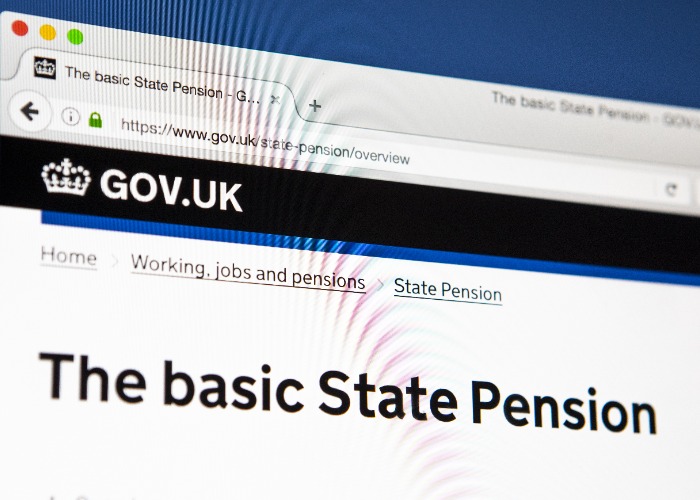loveMONEY comment: time for younger workers to plan for no State Pension

New data suggesting the State Pension coffers will run dry in a decade is yet another reminder of the perils of relying on the Government to cover our retirement needs.
There was yet more bad news for pension savers this week after a think tank claimed the State Pension was on life support.
The Adam Smith Institute warned the National Insurance Fund (NIF) that covers the benefit could run dry by 2035.
It comes just four months after the Government Actuary Department (GAD) said that, without additional funding, the NIF would run out of funds in the next two decades.
This makes for difficult reading if you're among the many savers who include the State Pension in their retirement planning.
And it might be time for pension savers – especially younger ones – to make a very painful recalculation to their retirement plans.
How much the State Pension pays in 2024
Relying on the State Pension
The prospect of the fund used to pay the State Pension running out of cash is even more worrying when you consider how many people already, or are set to, rely entirely on these payments to fund their retirement.
Analysis by the Office for National Statistics (ONS) a couple of years ago found that around a third of Brits did not expect to have any sort of pension provision beyond the State Pension when they eventually give up work.
There can be all sorts of reasons for this.
Some people did not feel able to contribute to private pensions due to other financial worries, while some suggested they preferred other forms of saving, such as through a Lifetime ISA.
Nonetheless, it’s a useful insight into just how dependent significant numbers of people are going to be on the State Pension, which is all the more striking when you consider it isn’t so generous that you’ll be able to enjoy a luxurious retirement with it.
Tinkering with the State Pension
Given the worries over the National Insurance Fund, it’s no surprise that some are questioning how viable the State Pension is in its current form.
Unsurprisingly, there are queries raised over the triple lock.
It’s certainly done a great job in boosting pensioner incomes, but the last two years of enormous hikes suggest that it can be more volatile than is ideal.
If this were not an election year then there might be a more serious case for amending it immediately, but ahead of poll day that’s beyond wishful thinking.
Attention is also likely to return to the age at which we receive the State Pension. Putting that back will help save the Treasury cash, and improve the longevity of the money in the fund.
The State Pension age is set to increase to 67 in the next few years and then 68 in the mid-2040s, though there was discussion that this would be brought forward into the 2030s last year.
Again, with an election on the horizon, it was clearly determined that this was not a smart move but there will inevitably need to be more conversations around precisely when people can start to claim the benefit.
State Pension: 5 mistakes that impact how much you get paid
Plan for retirement as though you won't get the State Pension
Even with the big hikes to the State Pension over the last few years, it still isn’t exactly a huge income.
Since April, if you receive the full new State Pension, you’re only getting an income of £221 a week or around £11,500 a year.
For younger Brits there's also the important question of how long you'll have to wait before you're even eligible to receive payments: a recent report from the thinktank International Longevity Centre UK suggested the State Pension age could rise to a staggering 71 by the year 2050.
At best, younger workers should see the State Pension as something that could supplement their income in the second half of their retirement.
That means you are going to need to have a solid private pension in place, even if the National Insurance Fund is dramatically supplemented by the Treasury.
Crucially, that doesn't mean relying on the workplace pension scheme, where employers are required to open and contribute into a pension for their employees, to get you there.
That's because the minimum contribution levels are not going to result in a particularly large pension pot.
The difficulties of the last few years have also meant that plenty of people have stepped back from making pension contributions, or at least reduced how much they are paying in.
There is also the problem of the self-employed, who cannot make use of the workplace pension scheme.
Studies last year from Interactive Investor found that three-quarters (76%) are not paying into their pension at the moment, while more than a third (38%) do not have a pension at all.
There’s no golden bullet that will fix this situation, and there's no question the outlook has become increasingly precarious in recent years.
With the funds used for the State Pension under such pressure, more responsibility falls on us as individuals to put the money aside that we will need in retirement.
That means planning as early as possible and, at times in your life when it's financially possible, ramping up your contributions as much as possible.
Planning for a retirement funded almost entirely by your private pension whilst also paying National Insurance will undoubtedly be a bitter pill to swallow, but it will at least protect you from any potential failings regarding the State Pension.
Comments
Do you want to comment on this article? You need to be signed in for this feature
